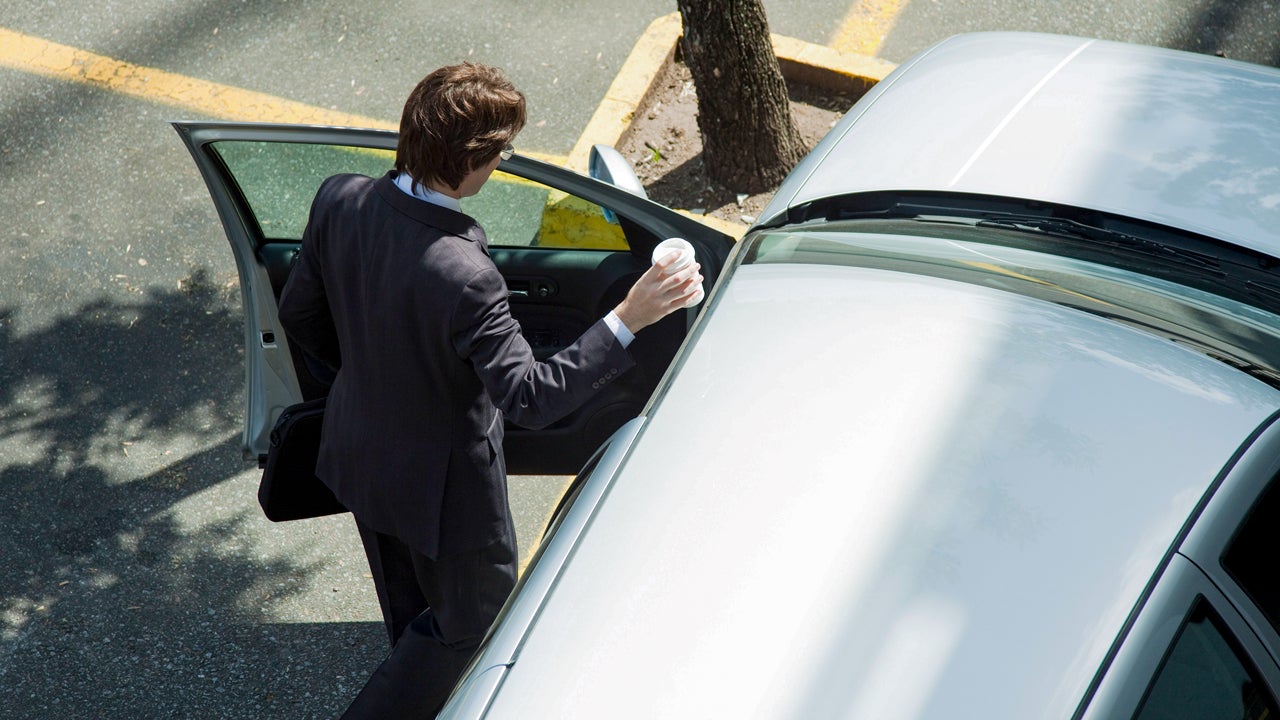What is a lienholder?

Shopping for a new car is an exciting venture and a learning experience. As you’re shopping around, especially if you’re looking to finance your new car, you may be wondering: what is a lienholder? Simply put, it is the lender who finances your car. In this article, Bankrate’s insurance team breaks down who needs a lienholder, how to purchase a vehicle with a lien and more.
How does a lienholder work?
A lienholder is any lender who loans you money to help finance your vehicle. The lienholder can be a car dealer, a bank or a private party. The entity holds a legal claim (or lien) on your vehicle until you pay off the loan made to you.
When you have a lienholder, you will technically be sharing the title of your car with the party who loans you the money. So the lienholder will be listed on the vehicle’s title until the loan is paid in full. Once the loan is paid, the title will be released to you as the sole interest. A lienholder must also be listed on your car insurance policy, as they have an insurable interest in your vehicle since they have co-ownership of it until it’s paid off. In most cases, a lienholder will also require you to have full coverage car insurance on the financed vehicle. If you don’t comply with the lienholder’s insurance requirements, the lienholder could charge you more to cover the gaps in your insurance coverage.
Who needs a lienholder?
Anyone financing their vehicle rather than purchasing it outright will need a lienholder. The most common type of lienholder is the loan issuer of your car loan. But there are other rare occasions when a lienholder may be added. A person may file a mechanic’s lien on your vehicle if you don’t repay a debt. The mechanic’s lien may need to go through the courts first before a lien can be added at the DMV.
Do I need a lienholder if I lease a car?
A lienholder is only needed when financing a vehicle. A lease is not a loan because you don’t own the car — you’re essentially renting it for a set time. There is a financial transaction going on between you and the company that leases you the car. But instead of being called a lienholder, the entity is referred to as a lessor.
How to find out if a car has a lien
If you’re interested in purchasing a pre-owned vehicle, it’s a good idea to check and see if the car has a lien. An individual may have placed a mechanic’s lien on the vehicle or the car payments were not paid in full, resulting in a possible repossession if the car is located. Purchasing a vehicle with a lien means you’re ultimately responsible for outstanding debts to the lienholder. Here are some ways to find out if a car has a lien before you buy it:
- The fastest way to check if a car has a lien is by reviewing the vehicle’s documentation. Check the vehicle’s title to see if a lienholder is named on the title.
- If you don’t have access to the title, many states have an online title checker. You’ll need to enter the vehicle identification number (VIN) to receive a title report on the car.
- You can pay for a title report from companies that provide car histories and perform VIN checks. The companies provide a title check as well as an accident history for the associated vehicle.
How do I buy a car with a lien?
Many people sell vehicles with a lien. If you know that the car you’re interested in buying has a lien and you’d like to move forward with the purchase, there are some steps you could take to protect yourself before you buy the car:
- Negotiate a lower price for the vehicle. You may be able to deduct the outstanding loan from the vehicle purchase price and use the deduction to pay the loan off.
- Ask the seller to get the vehicle loan discharged. For your protection, wait for the seller to complete the process before you purchase the vehicle.
- Convince the seller to pay off the loan amount. The seller may be willing to pay the loan off with the proceeds from the sale. Be sure to get the agreement in writing.
- Ask the seller to refinance the amount owed. If the seller can refinance the amount to pay off the lien on the vehicle, it clears any financial responsibility from you when you purchase the car.
Does a lien affect car insurance?
If you have a lienholder, car insurance requirements may be different from the minimum liability requirements in your state. A lien affects your car insurance because the lienholder that’s financing the auto loan will likely require you to buy more insurance than the state-required minimum liability coverage. Liability coverage only protects other vehicles damaged in an accident. You will likely have to purchase full coverage car insurance, which generally includes the minimum requirements set forth by your state, in addition to comprehensive and collision coverage.
How to add or remove a lienholder
The easiest way to add a lienholder to your auto policy is to contact your auto insurer and provide them with your lienholder’s information. Your lienholder might be able to contact them on your behalf, but most insurers want to speak directly with the policyholder before making this change. It’s best not to assume your lienholder took care of this for you. You also might be able to add a lienholder to your policy through your insurer’s website if this feature is available. Once a lienholder is added to your policy, they will receive a notification from your insurer that the vehicle is insured.
After you pay off your vehicle, you can remove the lienholder from your auto insurance policy. Then, it’s up to you if you want to continue carrying comprehensive and collision coverage on your vehicle. Keep in mind that if you remove these coverage types from your policy, you will pay out of pocket for damage your vehicle received in instances like hitting another vehicle or receiving hail damage.
Frequently asked questions
-
-
A lienholder has the right to take possession of your vehicle if you fail to satisfy the lien. To cover the loss, the lienholder can sell the car.
-
To protect your finances when financing a vehicle, you may want to purchase gap car insurance. If you total your vehicle, gap insurance will cover the difference between what you owe on the loan and what your car is worth at the time of the loss. This type of coverage is optional and may be especially helpful if you drive a newer vehicle.
-
To add your lienholder to your car insurance, you’ll likely have to get the contact information from your lienholder and then provide it to your insurance company. Your auto insurer also may be able to search for your lienholder’s name in their database to find the right name and address for how your lienholder should appear on your car insurance policy. However, it is important that you verify this contact information with your lienholder so that your auto insurer is notifying the right company that your vehicle is insured.
-
You may also like

Driving without insurance in New Jersey

What is full coverage car insurance?

What is a car insurance deductible?

What is collateral insurance and how does it work?


